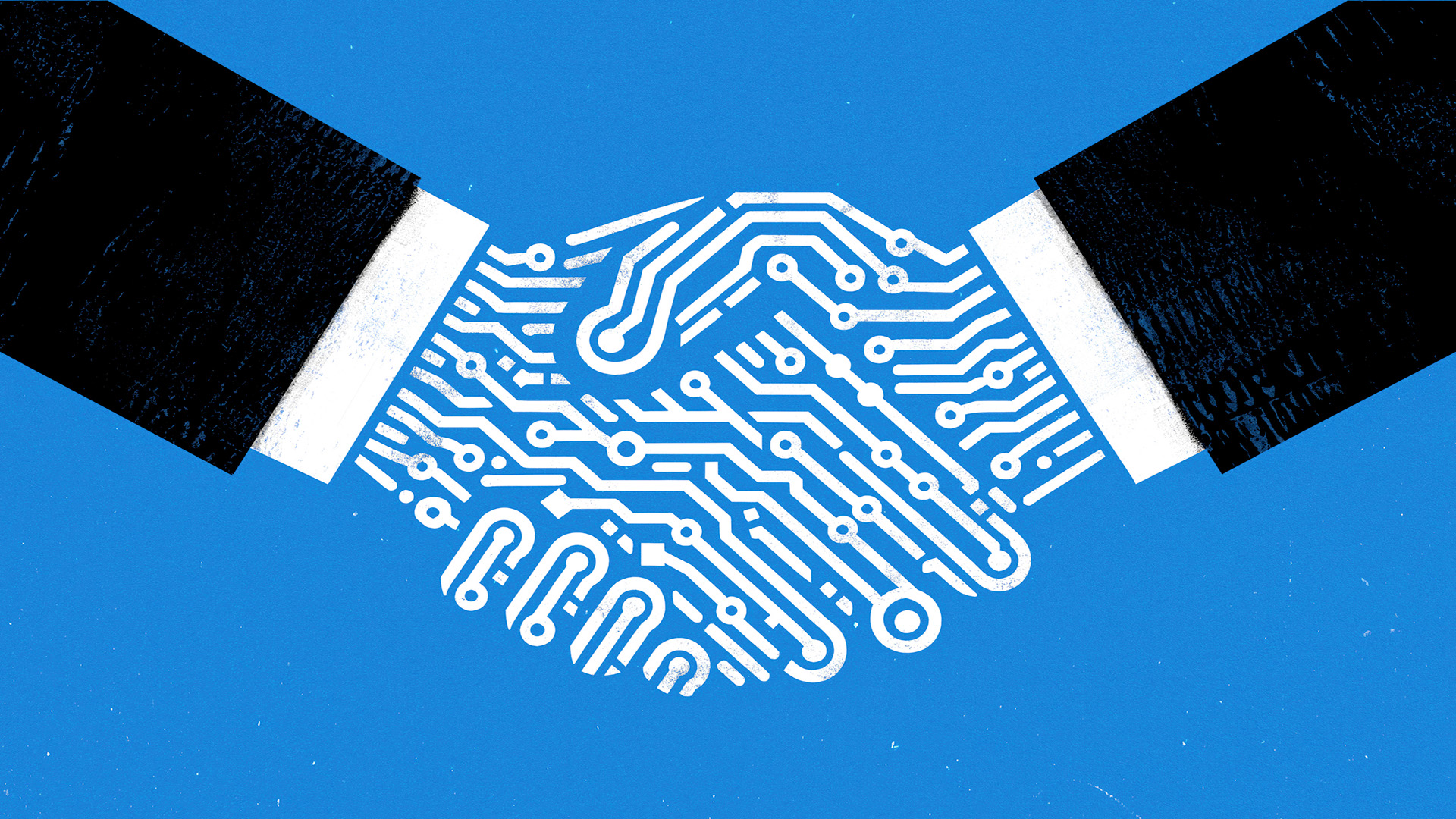Why collaboration is key to digital transformation
Unlocking the massive potential of digital transformation for businesses requires working with the right channel partners

The last few years have been difficult for everyone, but they have had a permanent impact on the way we do business. Although companies were already considering digital transformation to improve efficiency, many had to accelerate their plans to cope with the explosion of working from home and customers’ increased use of digital services. Now that organisations are further along in their digital transformation journeys, it’s more important than ever to continue to develop these strategies. However, doing so successfully requires the right collaboration partners.
One of the most fundamental elements of digital transformation is how the company uses its data. This doesn’t just encompass data as it has been and is currently being used by the organisation. It must also consider future developments, and indeed should be viewed as an integral part of the innovation process leading towards leveraging the most benefit from those future developments. The healthcare industry, for example, is becoming increasingly data-driven, from drug research to managing payments for treatment regimes.
Similarly, while the financial industry has always been data-driven to some extent since the era of the abacus, leveraging that data more intelligently to improve decisions and manage risk more effectively is much more contemporary. Some supply chain and logistics organisations have based their dominance on efficient use of data, but many companies have yet to take the major steps. Here, there is much that can be done to digitally transform for greater real-time visibility and insights, delivering enhanced efficiency.
Manufacturing can benefit from greater operational transparency, so that performance can be measured against KPIs instantaneously. Real-time operational intelligence can be leveraged to predict when maintenance will be required for plant machinery before a failure causes costly downtime. This can be automated through analytics. Even governments can employ digital transformation to improve public safety, upgrade the efficiency of provisions for citizens to use, and streamline communication between agencies. This drive towards ‘e-Government’ necessitates the breaking down of the siloed legacy information systems used by governments.
A major benefit of digital transformation is resiliency in the face of uncertain economic times. Depending on the business type, digital transformation can provide the flexibility needed to deliver a hybrid workforce operating both in the office and remotely, as well as dynamically with a mixture of the two. But while the effective use of data underpins all digital transformation, the specifics of deployment vary between different business domains. There is a clear menu of tools available, but how they combine into a digital transformation solution depends on the industry and the specific needs of the organisation within that industry.
Key elements of digital transformation include analytics, Internet of Things (IoT) devices, artificial intelligence (AI), and machine learning (ML). Analytics are the cornerstone of turning business data into actionable insights. Data from multiple sources must be accessed, transformed, and harmonised so that it can then be used as the basis for predictive models. For example, analytics can reveal potential irregularities in financial behaviour for a bank. One of the growing sources of data for analytics is IoT devices. There are already billions of these, and this figure is set to increase dramatically every year. Some of these IoT devices add a greater volume to existing data, and some add a new dimension of data. There is a huge opportunity for new insights in a manufacturing context, healthcare, logistics, and for improving performance in the oil and gas industry, for example.
The exponential growth in data quantities poses its own problems, which is where AI and ML are invaluable. AI and ML can help find patterns in data, and even assist the process of moving from unstructured to structured datasets, so that these can be used effectively by analytics platforms. But the quality of the data fed into AI and ML is fundamental to the success of these systems. Appropriate application of AI and ML can drastically reduce the necessity for mundane user activity in structuring data.
The data being employed by analytics, produced by IoT devices and feeding into AI and ML models can often sit in organisational silos. Some of this data can be housed in on-premise databases, some could be in the public cloud, and an organisation could even have multiple implementations of either. This is where a smart data fabric - a new architectural approach that speeds and simplifies access to data assets across the entire business - can help to smooth the disparities in corporate data from many sources. It works by embedding analytics, including data exploration, business intelligence, ML, and natural language processing within the data fabric itself, making it faster and easier for organisations to gain new insights and power intelligent predictive and prescriptive services and applications. It does all this while leaving the original data repositories in place, negating the need for expensive transitions.
While a company will be an expert in its own domain – if it isn’t then it wouldn’t have built a successful business – it will not necessarily be expert in digitally transforming that domain by applying analytics, building in IoT insights, deploying AI and ML, and adopting a smart data fabric. This is why leveraging the right channel partners to collaborate with on this journey is so essential. By choosing best-in-breed partners in each area, companies can ensure that they get the most out of their existing data resources and technology investments, and develop innovations through the digital transformation process. A great place to find the right partners for collaboration is the InterSystems UK & Ireland Summit 2022: Leading Through Innovation event, which brings together many customers and potential channel partners to share experiences, providing real-world advice on the routes to take.
Digital transformation can drastically improve efficiency, but also provide the necessary information to reveal new opportunities. For example, the healthcare industry can use existing and emerging data to provide predictive diagnosis, or research that can help find causes of emerging illnesses and information that leads towards an effective therapy. Energy companies can manage demand more effectively using data from smart utility meters, balancing supply, and allowing customers to take advantage of lower rates at times of low usage, such as cheap overnight tariffs. Retailers can optimise the supply chain and improve customer experience with deeper knowledge of behaviour and product flow.
There is so much to be gained from digital transformation. But as more companies continue on their journey, it is now becoming not so much a bonus on top of existing business but an essential part of remaining competitive. Companies that don’t develop their digital transformation strategy to leverage the benefits of data for optimisation and innovation face an existential risk. That is why collaborating with the right channel partner to make the transformation as smooth and effective as possible is essential.
Enzo Brienza is sales manager at InterSystems
Stay up to date with the latest Channel industry news and analysis with our twice-weekly newsletter
ITPro is a global business technology website providing the latest news, analysis, and business insight for IT decision-makers. Whether it's cyber security, cloud computing, IT infrastructure, or business strategy, we aim to equip leaders with the data they need to make informed IT investments.
For regular updates delivered to your inbox and social feeds, be sure to sign up to our daily newsletter and follow on us LinkedIn and Twitter.
-
 UK channel partners to increase data-driven innovation for growth in 2026
UK channel partners to increase data-driven innovation for growth in 2026News The latest research from Westcon-Comstor has revealed that almost half of UK channel firms plan to invest in data-led offerings over the coming year
-
 Dell PowerEdge XE vs Dell PowerEdge R – which one is right for your business?
Dell PowerEdge XE vs Dell PowerEdge R – which one is right for your business?The Dell PowerEdge family can meet all enterprise server requirements but for maximum deployment efficiency, leaders should know which models to put where
-
 How SMBs can DIY their IT implementation and support
How SMBs can DIY their IT implementation and supportFeature For some small and medium-sized businesses, the third-party expertise and support might be out of reach. What’s the alternative?
-
 Keeper Security expands federal bench with latest senior hires
Keeper Security expands federal bench with latest senior hiresNews The security vendor has bolstered its federal team to support zero-trust access, operational execution, and government modernization efforts
-
 atNorth bolsters leadership bench with double appointment
atNorth bolsters leadership bench with double appointmentNews Tatu Tuominen has been named director of public affairs and communications, while Anne Helenius-Heir will serve as director of HSE
-
 Ronald Richardson to lead Leaseweb’s global commercial strategy
Ronald Richardson to lead Leaseweb’s global commercial strategyNews The experienced executive has been named Leaseweb’s new CRO as the IaaS provider embarks on the next phase of its growth journey
-
 HackerOne eyes enterprise growth with double C-suite appointment
HackerOne eyes enterprise growth with double C-suite appointmentNews Seasoned industry executives Stephanie Furfaro and Stacy Leidwinger have joined the cyber security vendor’s executive team
-
 Salesforce opens up Agentforce 360 for partners to drive agent development
Salesforce opens up Agentforce 360 for partners to drive agent developmentNews Salesforce has opened up its Agentforce 360 platform to allow partners to build and sell AI agents and applications.
-
 Alteryx names former Salesforce, Oracle strategist as new global technology alliances lead
Alteryx names former Salesforce, Oracle strategist as new global technology alliances leadNews The former Salesforce and Oracle leader will spearhead Alteryx’s partner strategy as the vendor targets deeper ecosystem collaboration
-
 Palo Alto Networks to acquire Chronosphere in $3.35bn deal
Palo Alto Networks to acquire Chronosphere in $3.35bn dealNews The cybersecurity vendor will combine Chronosphere’s observability platform with its own Cortex AgentiX offering

